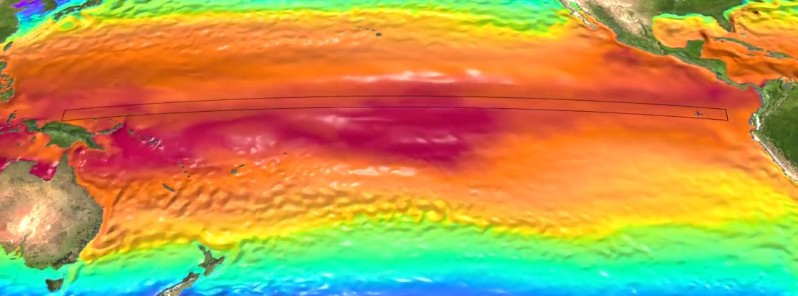Amazing high-resolution animation examines powerful 1997/98 El Niño

An amazing high-resolution animation of the largest historical El Niño has been produced by the scientists from the National Computational Infrastructure (NCI) and the ARC Center of Excellence for Climate Science, Australia.
A detailed animation which took 30 000 computer hours to model the ocean data on Raijin, the most powerful supercomputer in Australia, has investigated processes unfolding under the ocean's surface that caused the development of the 1997/98 El Niño. The weather phenomenon caused billions of dollars of damage across the globe, at the time.
"Raijin gives us the capacity to model complex global systems like El Niño that require a high resolution for a better accuracy. It was these huge volumes of data produced by the model that meant we needed the specialist visualization expertise from NCI to reveal what happened in detail," said Andy Hogg, an Associate Professor and a member of the team from the Australian National University.
The model was performed on a 30 km (18.6 miles) horizontal grid with a vertical ocean depth divided into 50 cells. Such an arrangement allowed the high-resolution overview of both the El Niño and following La Niña events.

Video credit: NCI National Facility
"The animation shows how shifting pools of warmer or cooler than average water 300m below the surface of the ocean can trigger these powerful events. When these pools of water burst through to the surface and link up with the atmosphere they can set off a chain reaction that leads to El Niños or La Niñas," said Dr. Alex Sen Gupta, a member of the visualization team from the ARC Centre of Excellence for Climate System Science.
The 1997/98 El Niño triggered widespread fires in Indonesia, severe floods in Peru, and the first coral bleaching event that occurred on a worldwide scale, and killed 16% of the ocean corals in only one year.
"The animation shows us that a well developed deep ocean observation system can give us advance warning of extreme El Niños and La Niñas. Preserving and expanding the currently sparse observation system is critical to improving our seasonal prediction capability in the future," said team member Dr. Shayne McGregor from Monash University.
According to experts, the global climate warming will likely also affect the El Niño events, and large El Niños, in the level of the 1997/98 one will probably become more frequent.
"As the planet warms, it also appears that the swings between the two extremes, from El Niño to La Niña like the 1997 to 1999 sequence, will become more frequent. For this reason and many others, a reliable early warning of El Niño and La Niña will be vital for farmers, industry groups and societies to be better prepared for the extreme conditions they inevitably bring," concluded Dr. Agus Santoso from the University of New South Wales, and a member of the visualization team.
Featured image credit: NCI National Facility

Commenting rules and guidelines
We value the thoughts and opinions of our readers and welcome healthy discussions on our website. In order to maintain a respectful and positive community, we ask that all commenters follow these rules.